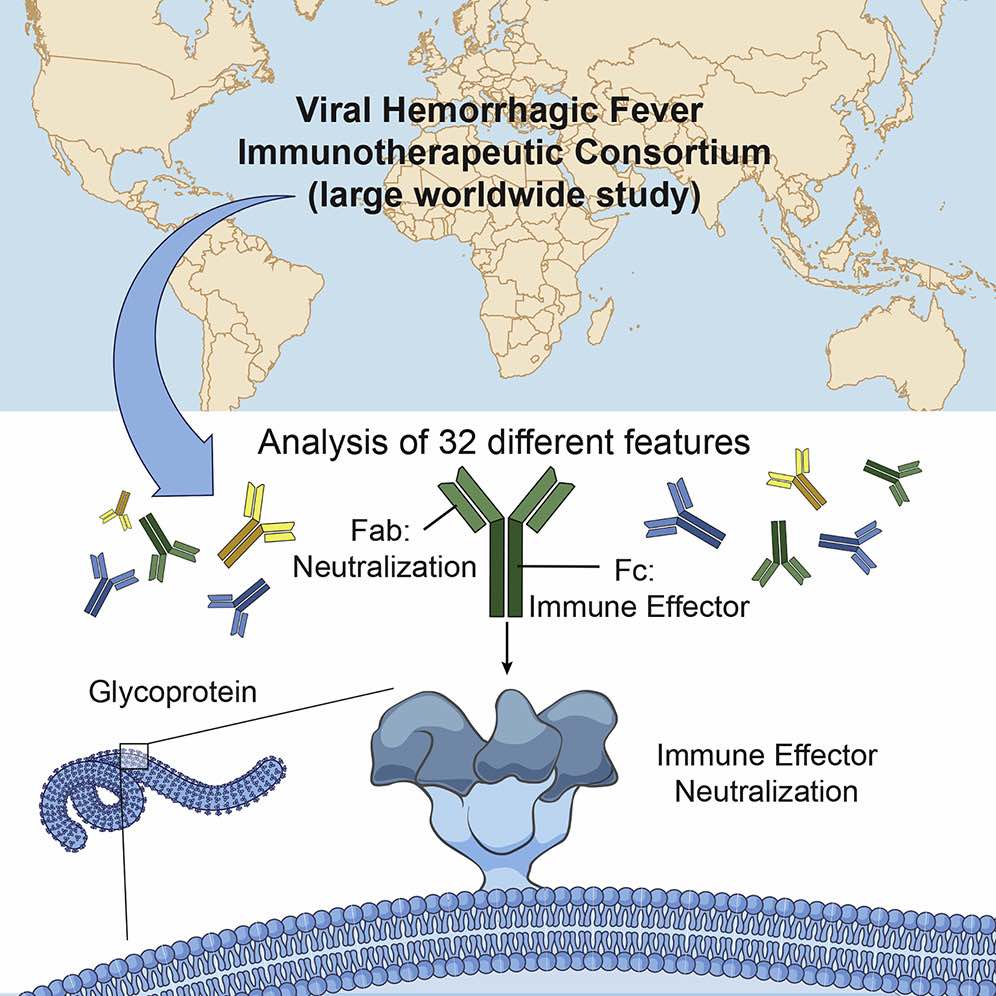In two papers published in Cell and Cell Host Microbe CViSB investigators, together with colleagues from our VIC sister consortium, describe in detail antibody responses to Ebola. By systematic analysis of a large set of more than 170 monoclonal antibodies to Ebola virus, the researchers show which immunological features play key roles in protection against the virus.
The researchers aimed to understand which Ebola-fighting antibodies are best – and why. The hope is that the most effective antibodies can be combined in a therapeutic “cocktail.” Unlike an Ebola vaccine, these cocktails could be given to those already infected, which is important for stopping a disease that tends to emerge unexpectedly in remote locations. Ollmann Saphire from VIC and her CViSB colleagues have published more than 40 studies in just the last five years. This landmark study is the first-ever side-by-side comparison of 171 antibodies against Ebola virus and other related viruses, known as filoviruses. All antibodies in the panel were donated by different labs around the world, and many had not been previously characterized in such extensive detail.
“Through the consortium, we could test a larger pool of antibodies in parallel, which increased the potential to detect statistically significant relationships between antibody features and protection,” says Saphire. “We used this global pool of antibodies to evaluate, and streamline, the research pipeline itself.”
In addition to identifying links between antibody target locations and activity, the researchers tested this huge pool of antibodies to reveal which antibodies “neutralized” the virus, why neutralization assays so often disagree, and whether or not neutralization in test tubes adequately predicted how well these antibodies would protect live animals from Ebola virus infection. Unexpectedly, neutralization alone was not always associated with the protective ability of an antibody. Notably, the scientists found nine antibodies that protected mice from infection without neutralizing the virus in test tubes. These antibodies likely fight infection by interacting with an infected person’s immune system, helping orchestrate a better immune response to the virus.
From the large body of results, CViSB researchers developed a network describing how each antibody feature correlates to protection, which can serve as a guide to predict whether newly identified antibodies will have therapeutic value. The next steps for the collaboration between CViSB and VIC are to further test promising antibody cocktails in non-human primates. The team will also pursue engineering of antibodies that carry signature features to better drive immune system response.
Links
Press release from Scripps Research
A Role for Fc Function in Therapeutic Monoclonal Antibody-Mediated Protection against Ebola Virus
